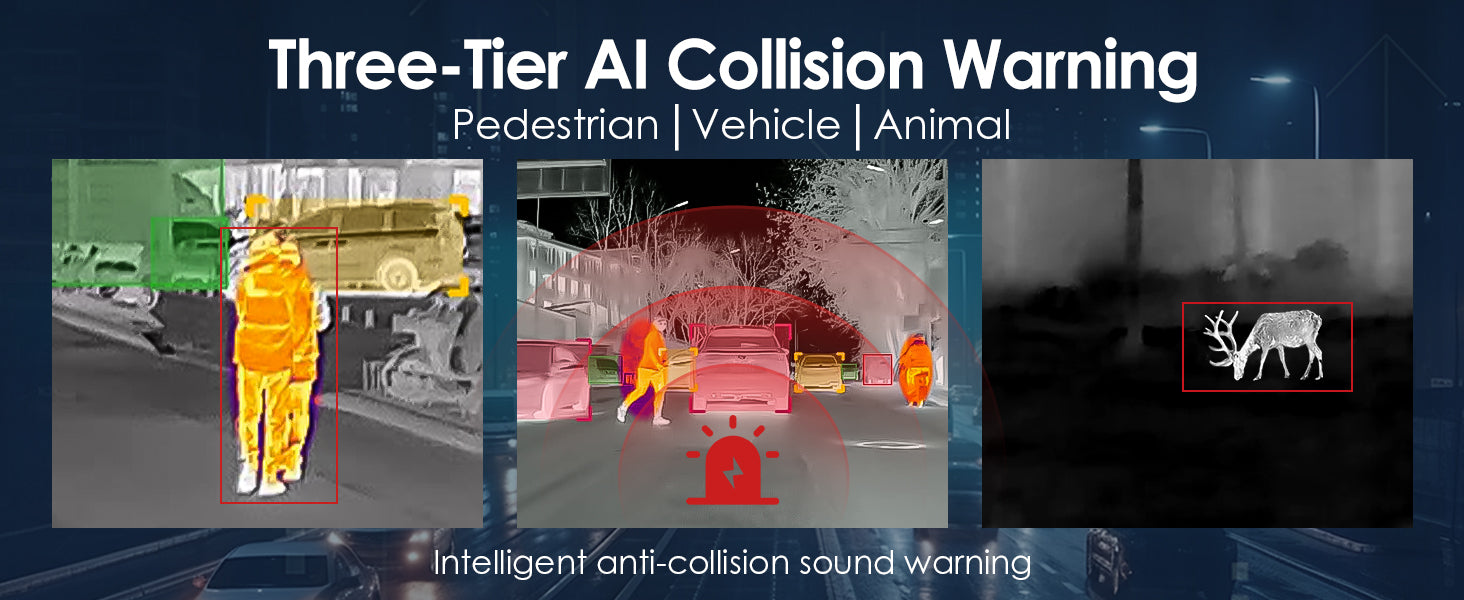Enhancing Driver Safety: Innovative Solutions for Special Driving Hazards
Introduction
Driving presents inherent risks, some of which are difficult to avoid. While experienced and attentive drivers can mitigate many dangers, certain situations pose unique challenges. In this article, we address three such scenarios and introduce innovative solutions to enhance driver safety.
Driving at Night
Limited Visibility Challenges
Driving at night, especially at high speeds or on winding roads, presents challenges due to limited visibility relying solely on vehicle headlights. Hazards like sharp curves or sudden animal crossings increase accident risks.
Hazards of Night Driving
Night driving limits a driver's ability to see clearly. Even with high-quality headlights, visibility is restricted, making it difficult to spot obstacles or sudden changes in the road ahead. This limitation is particularly dangerous on rural roads or during adverse weather conditions.
Technological Solutions
Modern technology offers solutions to these challenges. Advanced systems like thermal imaging can significantly enhance a driver's ability to detect potential hazards early, even in complete darkness.
Solution: Airayvis CT-2 Thermal Infrared Vehicle Assistance System
The Airayvis CT-2 Thermal Infrared Vehicle Assistance System boasts a 656-foot (200-meter) ultra-long detection range coupled with pioneering AI algorithms, enabling advanced hazard prediction. By utilizing cutting-edge technology, drivers can anticipate potential dangers well in advance, allowing for timely response and accident prevention.
Features and Benefits
The CT-2 system provides superior visibility with its thermal infrared capabilities. It can detect obstacles, animals, and pedestrians in total darkness or adverse weather conditions. The AI-powered system analyzes the surroundings and alerts the driver to potential hazards, enhancing overall safety.
User Experiences
Drivers who have used the CT-2 system report feeling significantly safer when driving at night. The enhanced visibility and early warning system give them confidence, especially on poorly lit or winding roads.
Oncoming Vehicle Misuse of High Beams
Temporary Blindness Risks
Misuse of high beams by oncoming vehicles can temporarily blind drivers and create visual blind spots, significantly compromising safety on the road.
Impact on Driver Safety
When drivers are exposed to high beams from oncoming traffic, their vision can be momentarily impaired. This temporary blindness can cause dangerous situations, as the driver may be unable to see the road or any obstacles.
Strategies for Mitigation
Drivers are advised to look away from oncoming headlights and focus on the right edge of the road to mitigate the effects of high beams. However, this is not always sufficient, especially on narrow or winding roads.
Solution: Airayvis CT-2 Infrared Night Vision
The Airayvis CT-2 infrared night Vision system overcomes this challenge by utilizing state-of-the-art cameras and chips to easily identify thermal information. When encountering high beam blind spots, the system provides clear visibility, allowing for timely hazard avoidance. This innovative solution ensures that drivers can maintain full awareness of their surroundings, even in challenging lighting conditions.
Advanced Thermal Imaging
The CT-2 system uses advanced thermal imaging to cut through the glare of high beams. It provides a clear view of the road and any potential obstacles, ensuring the driver can react appropriately.
Enhancing Road Safety
With the CT-2 system, drivers can navigate roads safely even when faced with oncoming high beams. The system's ability to detect and highlight potential hazards ensures that drivers maintain awareness and control.
Entering Tunnels During Daytime
Sudden Lighting Changes
Entering tunnels during daytime can cause temporary discomfort due to sudden changes in lighting, and drivers may struggle to assess tunnel conditions beforehand.
Challenges of Tunnel Navigation
The abrupt transition from bright daylight to the dim lighting of a tunnel can disorient drivers. This sudden change can make it difficult to see clearly and react to any obstacles or changes in the road.
Visibility Issues
Poor lighting within tunnels can obscure the road ahead, making it hard to see other vehicles, lane markings, or any potential hazards. This lack of visibility increases the risk of accidents.
Solution: Exceptional Imaging Capabilities
The Airayvis CT-2 addresses this issue by utilizing a high-performance infrared chip paired with an advanced image processing chip, ensuring exceptional imaging capabilities regardless of lighting conditions. With our technology, drivers can navigate tunnels with confidence, maintaining clear visibility and awareness of potential hazards.
Infrared and Image Processing Technology
The combination of infrared imaging and advanced processing technology ensures that drivers have a clear view of the road, regardless of the lighting conditions. This capability is particularly useful in tunnels where lighting can be inconsistent.
Benefits for Tunnel Driving
With the CT-2 system, drivers can confidently enter and navigate tunnels, knowing that they have the visibility needed to see and respond to any hazards. This improved visibility reduces the risk of accidents and enhances overall safety.
Conclusion
In conclusion, the Airayvis CT-2 Thermal Infrared Vehicle Assistance System offers effective solutions for special driving hazards, enhancing driver safety and peace of mind on the road. By utilizing cutting-edge technology, drivers can proactively anticipate and mitigate risks, ensuring a safer driving experience for all.
FAQs
1. How does the Airayvis CT-2 improve night driving safety?
The Airayvis CT-2 improves night driving safety through its advanced thermal infrared technology and AI-based hazard detection, offering enhanced visibility and real-time alerts for potential dangers.
2. What is the range of the Airayvis CT-2 system?
The CT-2 system offers a visibility range of 656 feet (200 meters), allowing drivers to spot hazards well in advance.
3. How does AI recognition work in the CT-2 system?
The AI recognition in the CT-2 system identifies pedestrians, animals, and other vehicles, providing real-time alerts to the driver to prevent accidents.
4. Can the CT-2 system function in adverse weather conditions?
Yes, the CT-2 system is designed to function effectively in adverse weather conditions such as fog, rain, and snow, ensuring optimal visibility at all times.
5. What kind of alerts does the CT-2 system provide?
The CT-2 system provides visual alerts by changing the color of detected objects and emits audible alerts to warn the driver of potential hazards.


Share:
Truck Smart: High-Elevation Airayvis CT-2 Thermal Infrared Vehicle Assistance System for Enhanced Night Safety